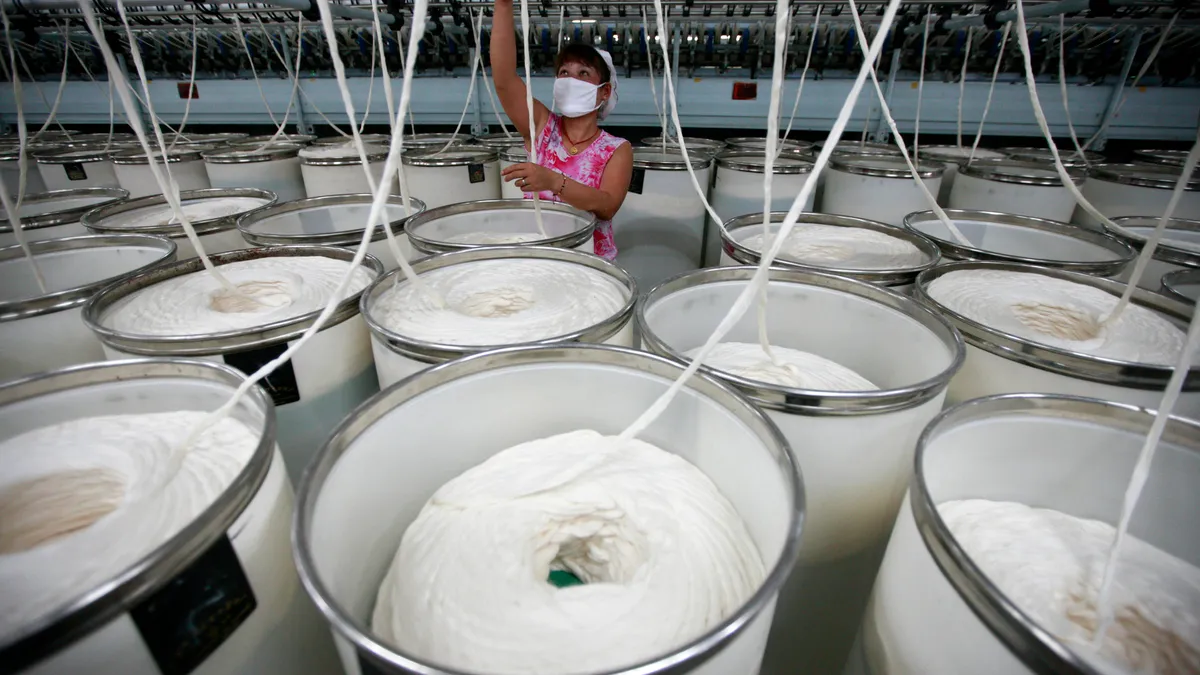Inflation and the economic outlook in the United States was a big concern for respondents in the United States Fashion Industry Association 10th annual Fashion Industry Benchmarking Study, released in July.
While 69% of respondents, who represent executives from 30 fashion brands, retailers, importers and wholesalers, said they still felt optimistic or somewhat optimistic about the industry over the next five years, that number is lower than the 77% of respondents who felt that way last year. Meanwhile, “inflation and economic outlook in the U.S.” is now the top industry worry, up from third place in 2022.
The survey, conducted between April and June 2023, asked respondents to address business outlooks, sustainability, sourcing practices, Free Trade Agreements and preference programs, and overall views on trade policy.
Only half of respondents, or about 48%, said they expected their apparel sourcing value to increase in 2023, showing a steep decline from the 90% of respondents who felt the same way last year.
More than 90% of survey respondents this year said they planned to allocate more resources toward sustainability and compliance over the next two years. Prior to the pandemic, that number was only 60%. On average, each surveyed company planned to allocate more resources to improve sustainability, social responsibility, and compliance, such as offering training and increasing the budget in that area.
Recycled and sustainable textile fibers were also important to industry executives, per the report. About 60% of surveyed companies stated that they plan to “substantially increase sourcing apparel made from sustainable or recycled textile materials over the next five years.” However, higher sourcing costs and low profit margins were regarded as the main obstacles toward achieving these goals.
China was a new topic of concern in this year’s survey. Nearly 80% of respondents said they had plans to reduce their apparel sourcing from China over the next two years, as concerns over forced labor in sourcing increase. Additionally, more respondents noted that finding a sourcing base other than China was a more prominent challenge in 2023 than in the previous year, per the report. Over 40% of respondents reported sourcing less than 10% of their apparel products from China, up from 30% a year ago.
The report found more fashion industry decision makers were seeking to source apparel from members of the Dominican Republic-Central America Free Trade Agreement, a free trade agreement between the U.S. and Costa Rica, El Salvador, Guatemala, Honduras, Nicaragua and the Dominican Republic.
Leaders noted that tackling forced labor risks in the supply chain is top of mind, particularly in China, Vietnam and Cambodia. Notably, well-known fashion companies Temu, Shein, Adidas and Nike are under investigation by a U.S. House Select Committee, which asked the companies to detail their compliance with the Uyghur Forced Labor Prevention Act that bans products from Xinjiang region in China, among other requests.
However, Vietnam’s garment industry relies on importing textile raw materials from China, and almost the same amount of Vietnam’s textiles were subject to compliance with UFPLA as China in the 2023 fiscal year, per the report.
Survey respondents also noted that their concerns over labor risks had decreased somewhat when sourcing from Bangladesh. The improved rating is due to “various stakeholders to enhance social responsibility practices” in the garment industry in the country since the 2013 fire and collapse of Rana Plaza, which left more than 1,100 people dead. Activism and compliance organizations have emerged in the wake of the incident, and recently, labor unions and garment workers in Bangladesh have been calling for an increased minimum wage.










